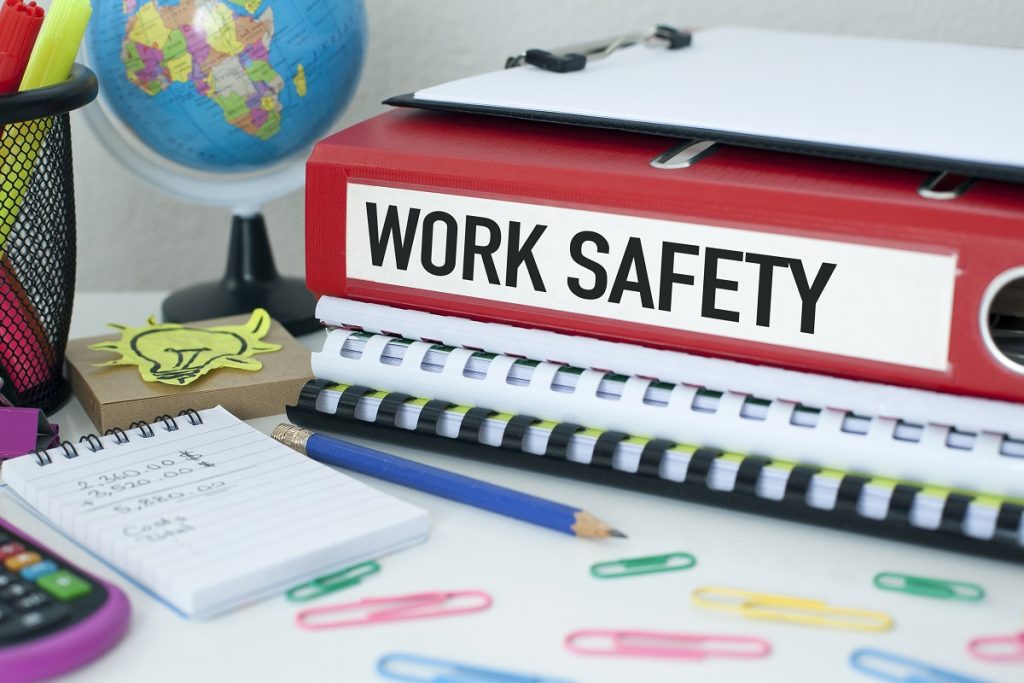- To reduce workplace injuries, create a safety plan that includes appropriate training, regular assessments, and inspections for potential risks.
- Ensure employees at risk of injury or illness use PPE (Personal Protective Equipment).
- To ensure safety, put up signs and labels throughout the workplace that communicate procedures and regulations.
- Ensure to maintain, store, and use all tools and machinery correctly.
Health and safety regulations are an important part of any workplace, as they ensure the well-being of employees and visitors. Compliance with health and safety regulations is a legal requirement for all businesses, but it also helps protect your staff from harm and can even improve productivity.
To help you comply with health and safety regulations in the workplace, there are some simple steps you can take to ensure that everyone remains safe. By complying with these best practices, you can guarantee that your business meets all requirements while fostering a safe environment for everyone involved.
Develop a safety plan.
Developing a safety plan is the first step in ensuring health and safety regulations compliance. Here are some tips on what to include in your plan:
Provide proper training to all staff members.

Providing proper training is crucial in ensuring all staff members comply with health and safety regulations in the workplace. A well-trained staff is the best defense against accidents, mishandling of equipment, and other potential hazards in the working environment. Training sessions should be consistent, thorough, and engaging.
Proper training helps employees better understand the importance of adhering to safety policies and procedures and how they can benefit the team. It also instills them with the knowledge and skills they need to operate equipment and handle critical situations effectively.
In today’s fast-paced work environment, where accidents and mishaps can happen in a split second, investing in proper training is a legal requirement and a responsible and necessary practice for any company to keep its employees safe and productive.
Perform regular risk assessments and inspections.
Regular risk assessments and inspections ensure a safe and healthy workplace. By identifying and evaluating potential hazards, companies can take the necessary steps to minimize the risk of accidents, injuries, and illnesses. Risk assessments involve examining the workplace environment, processes, and equipment to determine potential hazards that may arise.
Regular inspections ensure that safety measures are followed and issues are identified and addressed promptly. When done correctly, these assessments and inspections help promote a safety culture, reduce workplace accidents, and improve employee satisfaction and productivity. Understanding the importance of regularly conducting risk assessments and inspections is essential in maintaining a healthy and safe workplace.
Implement the use of personal protective equipment (PPE).

Properly implementing the use of personal protective equipment (PPE) is crucial for the well-being of employees and the overall success of the workplace. PPE includes any clothing or equipment that can protect an individual from potential harm, such as helmets, goggles, gloves, and face masks.
It is important to stress the significance of proper PPE use, especially for employees at risk of injury or illness. Implementing PPE shows an employer’s commitment to their workers’ safety and reduces the likelihood of workplace accidents and illnesses. With the right PPE and proper training on how to use it, workers can fulfill their duties without worrying about potential harm or injury, resulting in a safer and more productive work environment.
Install appropriate signage and labels.
Installing appropriate signage and labels throughout a workplace is critical in ensuring the safety and well-being of employees. These signs and labels communicate important information about safety procedures, equipment usage, and hazardous materials. They remind employees and guests to follow specific guidelines to prevent accidents or injuries.
Proper signage and labeling can also help mitigate potential legal issues if safety regulations are violated. Ultimately, installing appropriate signage and labels throughout a workplace demonstrates a commitment to the safety of employees and visitors alike.
Ensure that all tools and machinery are properly maintained.
Ensuring all tools and machinery are properly maintained, stored, and used correctly. Improper use or storage of equipment can lead to accidents or even fatalities, posing a serious risk to the well-being of employees and a company’s overall productivity. Regular maintenance and repairs can prevent equipment malfunctions, prolonging its lifespan and reducing costs associated with replacements or repairs.
Proper storage, such as keeping tools in designated areas and labeling them accordingly, can decrease the likelihood of equipment misuse. Ensuring that all employees are trained in equipment usage and safety procedures, and regularly reminding them of these protocols, is key to maintaining a safe and productive work environment.
Establish an emergency response plan.
Establishing an emergency response plan not only shows compliance with health and safety regulations in the workplace but also ensures the protection of employees in case of an emergency. To properly establish an emergency response plan, it is first important to assess potential hazards and risks that could happen in the workplace.
From there, developing a detailed plan that outlines clear steps for employees to follow in an emergency is crucial. One option to consider is contacting reputable electrical companies to conduct safety inspections and provide recommendations for any necessary upgrades to electrical systems.
It is also important to regularly review and update the emergency response plan to ensure it remains relevant and effective. Other options to include in the plan could be identifying designated assembly points, assigning specific roles and responsibilities to employees during an emergency, and conducting regular emergency drills to ensure everyone is prepared.
These are just some steps to ensure compliance with health and safety regulations in the workplace. Implementing these best practices can help you create a productive and successful work environment while reducing the risk and ensuring the safety of your employees.

